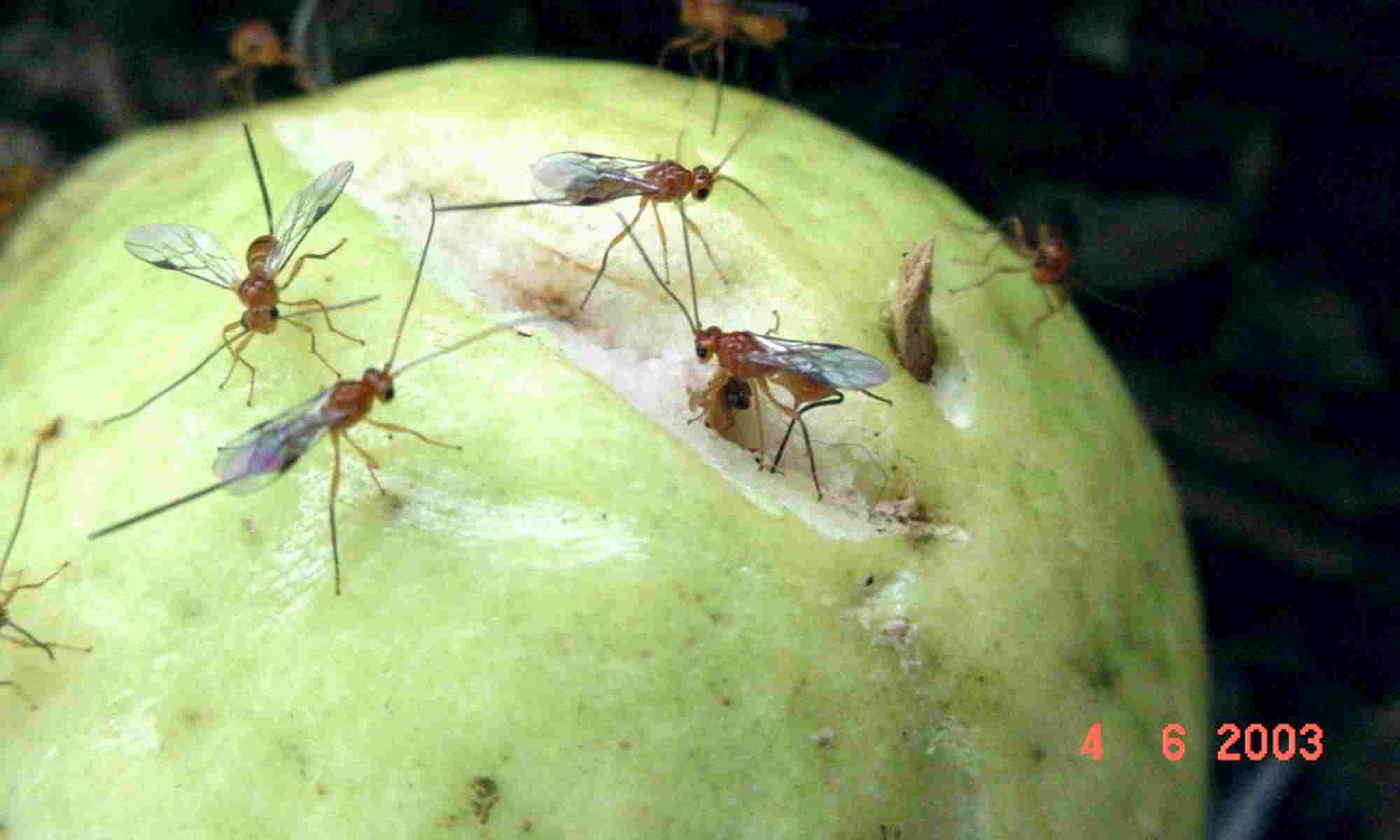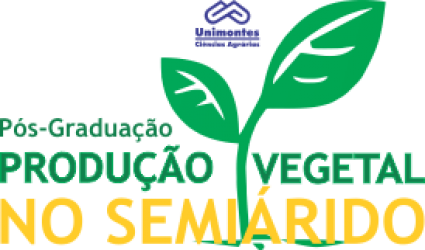- Version
- Download 11
- File Size 727.30 KB
- Create Date 11/06/2021
- Download
SOARES, Daniel Pereira. Moscas-das-frutas (Diptera:Tephritidae) no norte de Minas Gerais: Infestação e hospedeiros. 2018. 60 p. Dissertação (Mestrado em Produção Vegetal no Semiárido) – Universidade Estadual de Montes Claros, Janaúba, 2018.
O trabalho foi desenvolvido nos Distritos de Irrigação localizados nos municípios de Jaíba, Janaúba e Nova Porteirinha, ambos na região norte do estado de Minas Gerais. Objetivou-se conhecer e monitorar as espécies de moscas-das-frutas (Diptera: Tephritidae) existentes na região, os seus respectivos hospedeiros e os parasitoides nativos associados a estes hospedeiros. O trabalho foi realizado entre novembro de 2016 e novembro de 2017, por meio de coletas de frutos e do uso de armadilhas tipo McPhail, contendo como atrativo alimentar, proteína hidrolisada de milho a 5%. Os frutos coletados e os insetos obtidos das armadilhas foram encaminhados ao Laboratório de Controle Biológico da Universidade Estadual de Montes Claros – Campus Janaúba. No laboratório, os frutos foram pesados, contados, identificados e acondicionados em recipientes plásticos para a emergência dos adultos de moscas-das-frutas e/ou parasitoides. Os espécimes fêmeas de moscas do gênero Anastrepha obtidos dos frutos e das armadilhas foram fixados em álcool 70%, até a identificação das espécies. Foi elaborada uma análise faunística com as espécies de mosca-das-frutas obtidas dos frutos e das armadilhas. A associação entre as espécies de fruteiras e as espécies de moscas-das-frutas e seus parasitoides foi determinada. A flutuação populacional de moscas-das-frutas e de seus parasitoides foi determinada para o período avaliado. Foram registradas nove espécies de moscas-das-frutas nos três municípios abrangidos pelo levantamento, sendo, Ceratitis capitata (Wiedemann, 1824), A. dissimilis Stone, 1942, A. distincta Greene, 1934, A. fraterculus (Wiedemann, 1830), A. obliqua (Macquart, 1835), A pickeli (Lima, 1934), A. sororcula Zucchi, 1979, A. turpiniae Stone, 1942 e A. zenildae Zucchi, 1979. Das espécies identificadas, para apenas cinco estabeleceu-se a relação hospedeiro-praga. C. capitata foi a espécie com a maior gama de hospedeiros. Umbu-cajá, seriguela, umbu, goiaba e manga Palmer foram as fruteiras mais infestadas por moscas-das-frutas. A manga Palmer foi altamente infestada e apenas por C. capitata. As maiores populações desta praga ocorreram entre os meses de novembro/2016 e janeiro/2017 e de abril/2017 a agosto/2017, épocas coincidentes com a maturação dos frutos nos pomares de manga. O umbu-cajá e o umbu foram infestados apenas por A. obliqua. A maior população de Anastrepha spp. ocorreu entre dezembro/2016 e maio/2017, época de chuvas e frutificação de fruteiras nativas. C. capitata foi a espécie dominante no levantamento, sendo também a mais frequente. Dos frutos coletados obteve-se apenas parasitoides da espécie Doryctobracon areolatus, estando associado a cinco espécies de fruteiras nativas.
Palavras-chave: Ceratitis capitata; Anastrepha spp.; parasitoide; relação hospedeira
Fruit flies (Diptera: Tephritidae) in north of Minas Gerais: infestation and hosts
The work was developed in Irrigation Districts located in the municipalities of Jaíba, Janaúba and Nova Porteirinha, both in the northern region of the state of Minas Gerais. The objective was to know and monitor the species of fruit flies (Diptera: Tephritidae) existing in the region, their respective hosts and the native parasitoids associated with these hosts. The work was carried out between November of 2016 and November of 2017, by means of fruit collections and the use of McPhail traps, containing 5% corn hydrolyzed protein as food attractant. The fruits collected and the insects obtained from the traps were sent to the Biological Control Laboratory of the State University of Montes Claros - Janaúba Campus. In the laboratory, fruits were weighed, counted, identified and packed in plastic containers for the emergence of adult fruit flies and/or parasitoids. Female specimens of Anastrepha flies obtained from fruits and traps were fixed in 70% alcohol, until species identification. A faunistic analysis was carried out with the species of fruit flies obtained from the fruits and traps. The association between the species of fruit trees and the species of fruit flies and their parasitoids was determined. The population fluctuation of fruit flies and their parasitoids was determined for the period evaluated. Nine species of fruit flies were recorded in the three municipalities covered by the survey, Ceratitis capitata (Wiedemann, 1824), A. dissimilis Stone, 1942, A. distincta Greene, 1934, A. fraterculus (Wiedemann, 1830). A. obliqua (Macquart, 1835), A. pickeli (Lima, 1934), A. sororcula Zucchi, 1979, A. turpiniae Stone, 1942 and A. zenildae Zucchi, 1979. Of the identified species, for only five was established the relation host-pest. C. capitata was the species with the largest range of hosts. Umbu-cajá, seriguela, umbu, guava and mango Palmer were the fruit trees most infested by fruit flies. The Palmer mango was highly infested and only C. capitata. The greatest populations of this pest occurred between November/2016 and January 2017 and from April/2017 to August/2017, coinciding with the maturation of fruits in mango orchards. Umbu-cajá and umbu were infested only by A. obliqua. The largest population of Anastrepha spp. occurred between December 2016 and May 2017, a rainy season and the fruiting of native fruit trees. C. capitata was the dominant species in the survey, being also the most frequent species. The fruits collected were only parasitoids of the species Doryctobracon areolatus, being associated to five species of native fruit trees.
Keywords: Ceratitis capitata; Anastrepha spp.; parasitoid; host relationship

